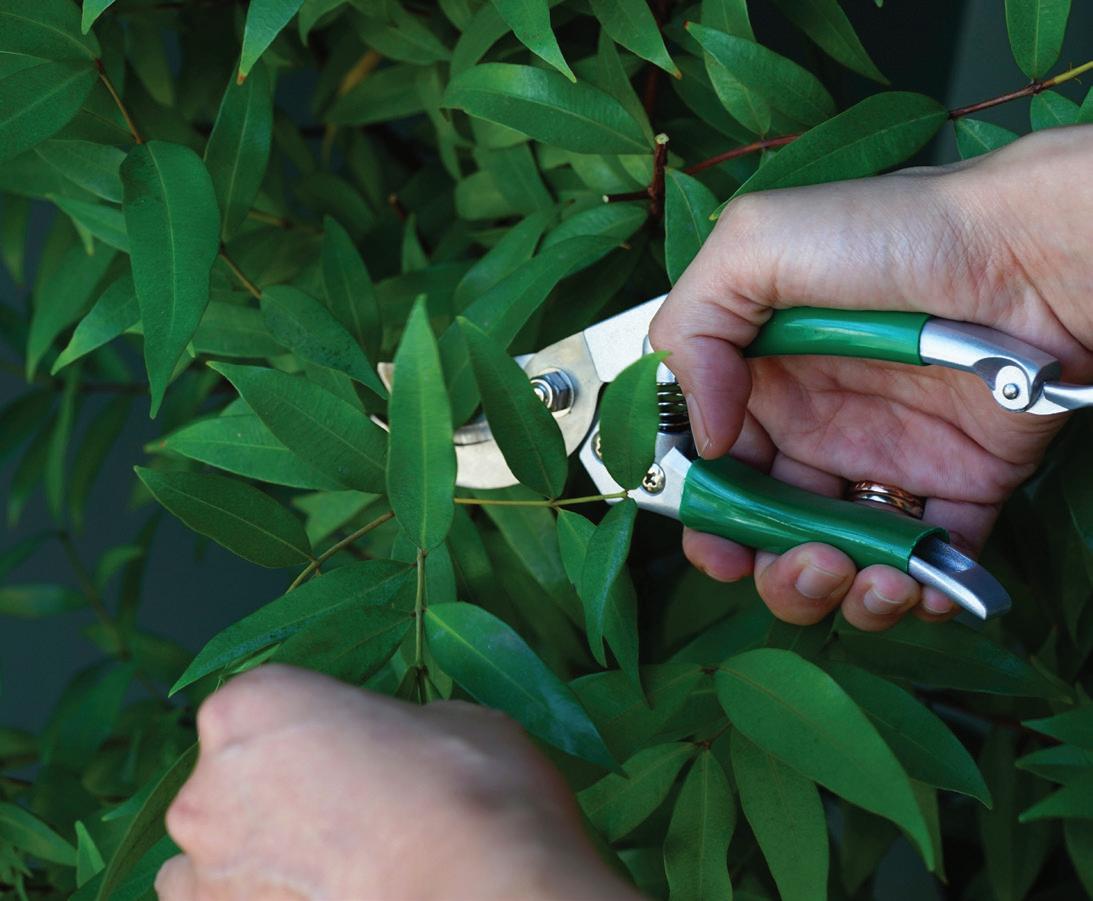Expert Contributor
When is the Best Time to Prune Trees? By John Traverso, Traverso Tree Service
T
his is a question we get asked frequently. Usually when a client asks this question, they have prior “knowledge” about what they think is the right time to prune. They have read something or heard something from someone about when they should prune their tree and they are confirming that their information is correct. The reality is that any time of the year can be the “right” time for pruning depending on species and the reason for the pruning. For example, the best time to prune Monterey pines is in winter when the bark beetle is dormant and the chance of infestation is less. However, if a pine tree has a fractured branch that hangs over the children’s play area in the middle of summer, then pruning it in July is the “right” time. The tree still might get infested with bark beetles, but the need for safety overrides the “best time to prune” pines which is in winter. From an arboricultural perspective the best time to prune trees is in the middle of winter or the middle of summer. Trees expend a lot of energy to shed their leaves in the fall preparing for the dormant season and also expend a lot of energy producing new foliage in the spring for the summer growing season. Pruning can be stressful for trees, therefore if you can prune during the winter and summer months when the tree is under less “stress” it can benefit the tree’s overall health. However, living in California where the climate is mild, you can perform “proper” tree work all year round,with the exception of a few species that are highly susceptible to certain insects and diseases. Knowing how trees grow can also help you “feel” like you have gained more bang for your pruning buck by pruning during certain times of the year. Trees are living dynamic entities and are constantly growing. A tree doesn’t stop growing just because you pruned it. Over time it is going to replace the foliage that was removed and probably add more to it. Sometimes the growth happens within 12 months, sometimes it takes years. If you are heavily pruning a tree to gain a view, regrowth will happen more rapidly than if you are just removing deadwood from the tree. If you prune at the beginning of the growing season (April-May) you will stimulate growth and the foliage might be the same in September that is was in April. However, if you prune at the end of the growing season (SeptemberOctober) the tree will still grow back will benefit from a longer pruning cycle. There are many variables that determine the “best” time of year to prune a particular tree, therefore, it is always best to ask an arborist when the best time is to prune your tree!
Here is a short list of trees that are recommended to be pruned at a specific time of year: Monterey pines - winter (November - February) when the bark beetles are dormant
Birches - winter to avoid bronze birch borers Alders - winter to avoid borers Mulberries - if they are being pollarded every year, December & January is best after leaf drop. Regular non-pollard pruning can be done any time of year Fruit trees - December & January especially if fruit production is a top priority. If the tree is valued as a ornamental first and the fruit is a secondary benefit, then you can prune the tree any time of year. Apricots - are susceptible to a disease that is spread during wet weather and should be pruned in July -August. Raywood ash - are susceptible to a disease that is spread through water so summer, when it is dry, is best Cypresses - are susceptible to a vascular disease that is spread by water so during the dry months of summer is best Conifers such as cedars, spruce, fir etc - you can prune them any time of year but they have a tendency to bleed from the pruning cuts and this can be slightly worse in the summer months went it is warm than it is in the winter. So if they are over a driveway where cars are parked winter pruning might be better to help lessen sap drop. Citrus- prune April (after all danger of frost is gone) to August. Citrus trees are susceptible to frost damage. Our goal is to leave a buffer zone of foliage on the tree in case we have a hard frost.
12
FEBRUARY 2020










